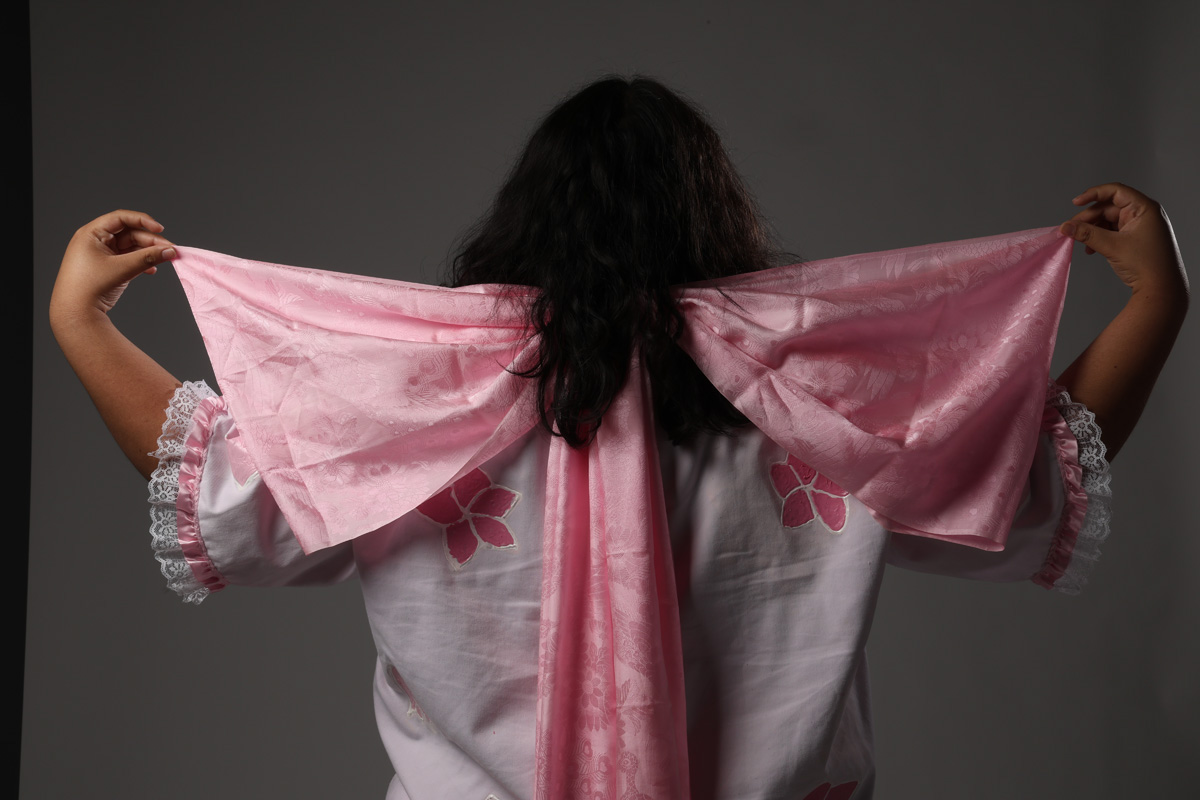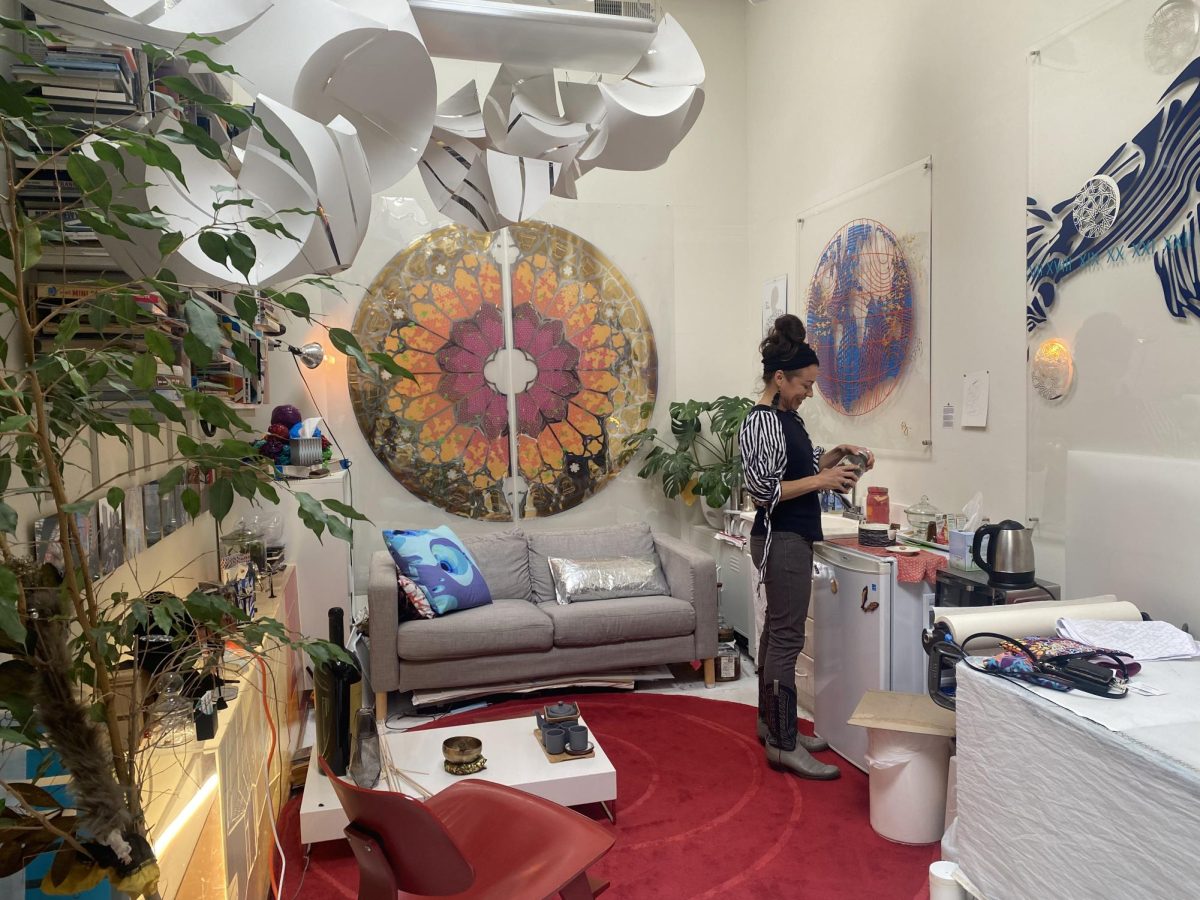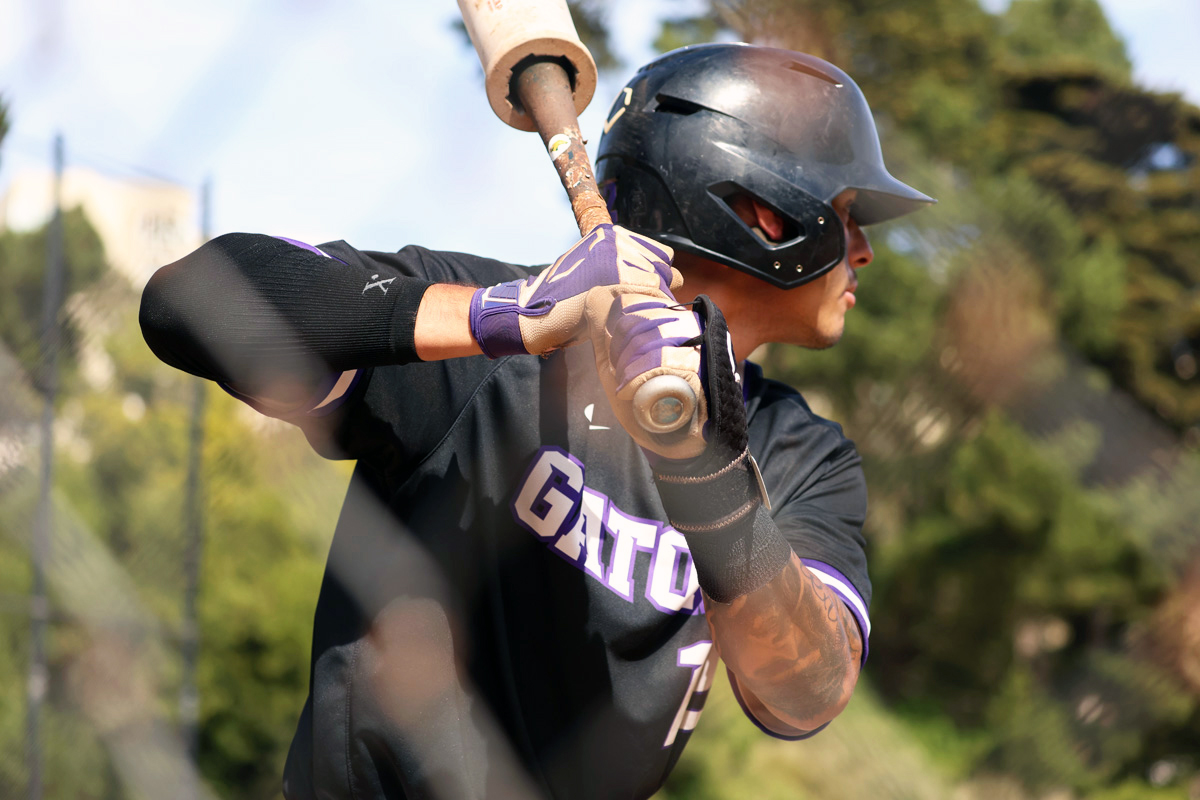It all started with his first word – Batman. Although the idea had always been with him, he never thought of making a living out of it. The thought of combining one of his biggest interests and academia seemed impossible, a concept to be ridiculed among scholars. He played with the thought.
And then he dared.
Nick Sousanis created two new classes for San Francisco State University this semester, both of which focus on comic books. The first class, called Comics and Culture, is described as an “introduction to the scholarly study of comic books and graphic novels.” The second class, Making Comics, allows students to put teaching in action and create their own comic books.
“Comics [have] such a fluid form that [they] can have people that draw really well and the sort of person that’s doing stick-figure things, but has a really compelling narrative that they tell that works in that form,” Sousanis said. “I think it’s a challenge with a class like this, because you can’t talk about technique that much, but mostly it’s talking about how to use the form, how to tell stories, how to tell ideas.”
“I think it’s a challenge with a class like this, because you can’t talk about technique that much, but mostly it’s talking about how to use the form, how to tell stories, how to tell ideas.”
He explained that although one of the class’ main focus is creating actual comics, there is little focus on the actual drawing process or technique. “It’s more about formal issues than it is about skills. What I wrote was ‘How can you say things in comics in ways that you can’t say in other forms and how do you understand them?’”
Sousanis has been teaching similar classes before at other schools, but they are the first of their kind at SF State and a rarity throughout the CSU system. In addition to the classes, he is also working with the School of Humanities and Liberal Studies to establish an actual minor in Comic Books.
The journey started when the department director began the search for a new professor who could teach the liberal studies courses on visual culture.
“We ended up being really fascinated with Nick Sousanis’ work. The search was not for a comics person, we weren’t looking for that, but he ended up being one of our finalists and as we got to know his work better, we decided to hire him,” said Director Cristina Ruotolo. “So we sort of ended up with a comics person, and he fit our description because he wasn’t just teaching comics as a genre and he wasn’t just a literary critic writing about comics; he was interested in how comics can be used to get us to think in new ways about things.”
The minor wasn’t part of the initial plan, but the development began naturally after he made connections with other faculty members, who also showed an interest in comics and wanted to incorporate it into the academic field.
“He’s very interested in visual learning and visual thinking, and that struck us as incredibly rich as a way to teach and as a topic to think about,” Ruotolo said.
The duo met with Trevor Getz, chair of the history department, to research if the interest on campus was common enough to support a program in comic books and what it would look like. Once they put the word out and met with other professors, Ruotolo said it turned out that there was a lot of interest, not only among faculty but students as well.
Four courses were created, two of which were offered this spring, and an additional two that will be offered next academic year. Ruotolo said that since twelve units are enough for a minor, they decided to start the process and hope for it to be approved and official next year. In addition to the four classes, faculty members in various departments throughout the campus have also expressed interest in teaching by using comics.
“It’s truly interdisciplinary, because comics have been around for a long time, but it’s only recently that people have started exploring how the form can be used to talk about all sorts of different things,” Ruotolo said. “So people are experimenting with it in lots of different fields, and it will be an interesting group of students that it brings together. I’m really excited about it.”
The comic books minor comes during a time when the purchasing and usage of physical books are said to be decreasing. However, according to the website Comic Chron, which tracks the purchasing of comic books to stores, the numbers are increasing. Albeit the numbers can be somewhat deceiving since the website’s data doesn’t actually track how many comic books are being sold to individuals, they are still record-high for the first time in decades.
The statistics are correlating to the fact that many comic books are becoming movies, and student Bersain Gutierrez said he thinks it’s because many of the people who watch the movies want to learn more about the origin of the featured heroes.
“You watch a movie, but as big of a blockbuster as it is, it came from a book, it came from an artist, it came from a writer.”
“You watch a movie, but as big of a blockbuster as it is, it came from a book, it came from an artist, it came from a writer,” he explained. “They created these characters and they created these stories.”
The twenty-six year old, a senior double-majoring in studio arts and political science, moved from San Diego after people around him suggested that if he wanted to study art, San Francisco was the place to be.
Sitting in one of the rooms of the Creative Arts Building, Gutierrez works on his final for the Making Comics class, while waiting for the other members of the Comic Books club to join the scheduled meeting. The group is having a potluck to celebrate the finished zine the students have been working on during the semester, a collection of various comic-type artworks they have put together. The plan is to display the zine at local conventions, but also on campus during fall semester as a way to promote the club and the classes.
“Another Superman shirt, yes, yes! This should’ve been the official shirt!”
Gutierrez turns to the student entering the room and grabs the bottom of his own shirt to stretch out the logo for the other members to see it better. It’s the iconic Superman “S”—his favorite comic and hero, and identical to what the newcomer is wearing.
“[Comics] were always a huge part of my life, even as a kid growing up,” Gutierrez said. “It was always the thing that I was into. It was the thing that I read, it was the thing that I drew, the thing that I learned from a lot because there were a lot of unique stories. I felt like I just grew with them, and there are so many things that I learned through them that are not necessarily the easiest thing to talk to someone about.”
He said that he used to draw during his free-time as a hobby, but that one day he realized it was something he could actually do professionally. He enrolled in both of the new comic books classes, and said he signed up for them as soon as he heard about them and Nick Sousanis.
“All of a sudden there were comics classes. All of a sudden there is a comics professor who is well respected and well renowned for his profession,” Gutierrez says. “It’s great, it feels like I came to the right place at the right time to find the tricks of the trade and to learn how to make an impact in the industry.”
Although he will not be able to declare the minor or have the time to take more comics classes, he says he still wants to be part of the process in some way in the fall.
“I was kind of bummed out, because I did find out that [the minor] is not going to be available until spring of next year and I really only have one semester to go,” Gutierrez said. He plans to graduate next fall, and added that he even contemplated to stay an additional semester so that he would be able to declare the comics minor.
“I’ve been wanting to talk to [Sousanis] about how, at least for my last semester, I can kind of be a student aid or work with him even if I’m not taking his classes,” Gutierrez said and explained that he wants to help expand the new program in any way possible. “Because I’ve learned a lot from him—how to use comics in different ways and that it’s not just superheroes that comics are all about, there are so many different ways to tell a story, there are so many different ways to even draw a story. So he has kind of branched out my mindset of what comics can be and how I can use them.”
Sousanis said that the minor could probably not have existed ten years ago, because of people’s approach to the art-form. However, he said it wasn’t because of the interest among students, but rather the stigma among academia.
But this approach eventually changed, and Sousanis was even able to write his entire dissertation from Columbia University in comic-book format, an exceptional creation and the first of its kind in North America. The work, now published as a book, argues about the importance of visual thinking as a tool in teaching and learning.
He is in his office, a multifunctional space that in addition to functioning as a classroom, is also a meeting place for his students to work on their projects.
“It’s great, it feels like I came to the right place at the right time to find the tricks of the trade and to learn how to make an impact in the industry.”
Although his class doesn’t start for another fifteen minutes, many students are already present and working on their finals. Some have been here for hours already, and Yuhna Kim, twenty-one, who is the president of the Comic Books club, is not even part of the roster.
Kim, who wasn’t able to enroll in either of the comic books classes this semester, said she is planning to take the Making Comics class this fall. Although she is already creating comics on her own, she said she hopes the class will allow her to hone her own skills, and learn how to draw long-form and more in-depth stories.
“It’s a visual story-telling kind of medium, and my main interest is leaning towards more light-hearted stories,” Kim said. “I like when people illustrate their personal experiences, or create their own original fantasy stories.”
She said she is mostly a fan of independent comic books as opposed to the more renowned publishers, and that her own works usually feature stories from her parents’ lives.
“There is a large push right now that there needs to be more room for independent comics in the mainstream scene because right now people are starting to realize that the comics industry is in a downward spiral creatively,” Kim added. “There just need to be room for more diversity, and I personally hope that we can spread the love for comics, at least across campus, because San Francisco is where underground comics started, and we’re trying our best to spread the sentiment that comics are cool.”





